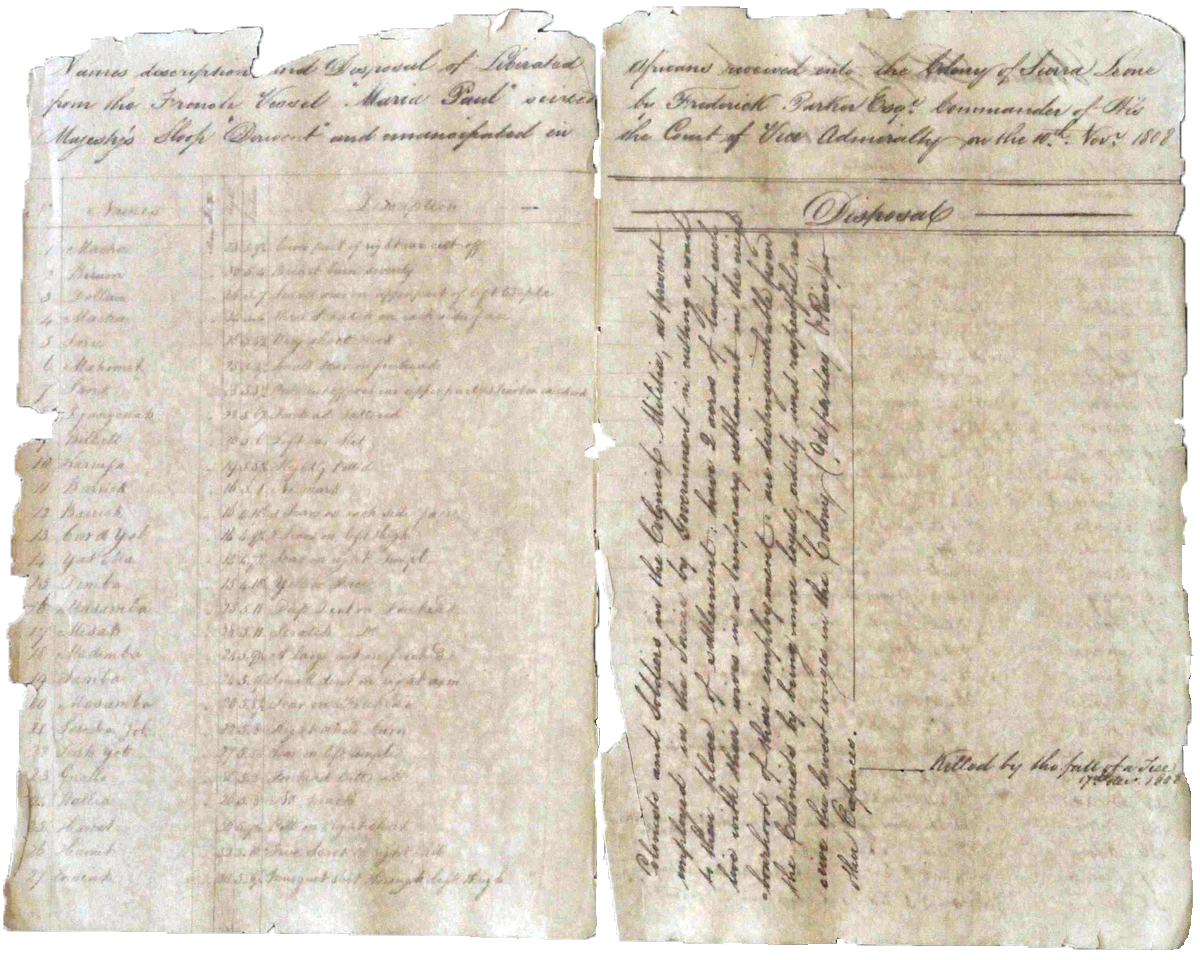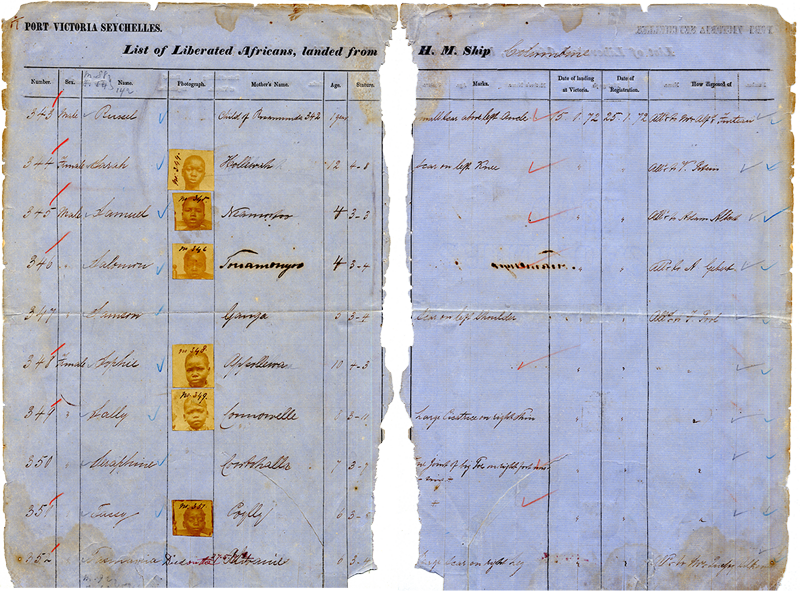Contracts of Indenture
|
"Names, description and disposal of Liberated Africans received into the colony of Sierra Leone from the French Vessel Marie Paul." Sierra Leone Public Archives, SLR1-60, 10 Nov. 1808. |
The "Registers of Liberated Africans" are one of the most significant sets of records related to enslaved people from Africa. Of the 700,000 "Liberated Africans," scholars currently know about lists for upwards 200,000 people, and there may be more. It was common for government agents to create lists of "Liberated Africans," which were compiled as evidence related to the legality of the capture, but also to monitor individual indentures or conscriptions. The registers were simultaneously record of an emancipation certificate and contract of free labor. The basic premise was for "Liberated Africans" to return after the terms of indenture had expired, usually several years later, check their name off the list, and become free from government control. While there were examples of "Liberated Africans" doing so, the majority would have never had the opportunity to return due to corruption, further displacement, and death.
The digitization, transcription, and interpretation of the "Registers of Liberated Africans" is ongoing due to the size, scope, and various locations of the global collection. As part of the case files, available copies can be found in the Court Records Digital Archive. Sometimes in duplicates or triplicates, registers are not always held at a single location, but scattered among a network of archives and libraries in different countries in Africa, Europe, the Americas, and Asia. The digitization of these records is not yet complete, although the process is well under way and often supported by national archives and libraries, including those cited in Digital Research.
The People dataset provides a unique regenerated identity for each child, woman, or man documented by name in the trial proceedings surrounding the suppression of the slave trade. Transcribing names and other biographical details of "Liberated Africans" into data is challenging due to the monotony of work involved. Each regenerated identity requires several sets of eyes to scrutinize spellings, particularly for the transliterated African names. Written in cursive on old and deteriorating historical paper, it is frequently difficult to identify with any certainty letters within the spelling of an African name. These words were originally based on a clerk listening to the name being spoken in an African language, and then recording it on paper in the phonetics of a non-African language.
|
"Port Victoria Seychelles. List of Liberated Africans Landed from H.M. Ship Columbine." Historical Papers Research Archive, University of the Witwatersrand, ZA HPRA A299, by John Gaspard Gubbings, 1872. |
The "Registers of Liberated Africans" did not always contain the same information, structure, or attention to detail. However, names, ages, sex, and height were the more common threads of biographical information found across these lists of indentured or conscripted people. Different register variations sometimes provided additional information such as descriptions of physical injuries, body and facial scarifications, brandings, skin color, settlement locations, or the names of African-born interpreters used during registration. Some lists included small sketches of brandings and scarifications, while others in the late-nineteenth century included photographs of individuals. The people dataset centers on "Liberated Africans" and is expanding to include the names of other people involved in the suppression process, such as slave traders, legislators, diplomats, judges, clerks, navy captains, guardians, and concessionaires.
A network of scholars have already participated in the transcription of over 120,000 names from "Registers of Liberated Africans." Since 2017, student interns and research assistants at the Digital Slavery Research Lab at CU Boulder and Walk With Web Inc. have been helping to transcribe the registers in the Caribbean, Indian Ocean, and Red Sea worlds. They are duly acknowledged for generating data and adding resources into the RegID content management system, which timestamps student contributions. For student names, internship programs, and years of involvement, please refer to the Project Team.

